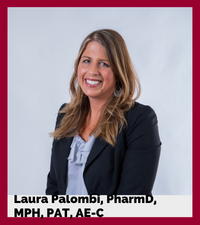This post is part of our "Bioethics in Focus" series featuring experts from the Center for Bioethics community.
Rural America and the American Indian (AI) communities embedded within them have been deeply impacted and disproportionately affected by the rise in opioid-use disorders and overdose fatalities.1 Opioid use disorders (OUDs) and substance use disorders (SUDs) have a wide-ranging negative impact on entire communities and cause significant preventable loss of life. Opioid-involved overdose deaths among Minnesotans increased 44% from 2020 to 2021, and the number of deaths has more than doubled since 2019.2
Harm reduction plays a key role in preventing drug-related deaths and offering individuals who use substances access to healthcare, social services, and treatment. Harm reduction efforts have spread across various settings and served people from a myriad of socioeconomic backgrounds. This life-saving harm reduction movement is unfortunately challenged and sometimes even halted by forces that include stigma, fear, and misunderstandings from communities and professionals. To overcome these barriers, public health professionals, community advocates, and medical personnel can all make a concerted effort to educate on the evidence base and benefits of harm reduction.
People who use substances and engage in unhealthy behaviors experience a higher risk for contracting preventable diseases, such as the human immunodeficiency virus (HIV). Minnesota has seen an increase of HIV in Hennepin and Ramsey Counties as well as the Duluth area in recent years. An outbreak was declared in Hennepin and Ramsey counties in 2020 with HIV cases dating back to December 2018, and the Duluth area declared an outbreak in 2021 with cases dating back to September 2019.3
The CDC estimates that more than one million people are living with HIV, with 21% of infected people being unaware they have the virus.4 With this growing trend, comes a disproportionate number of people in marginalized communities becoming infected with HIV, hepatitis C, and other sexually transmitted infections. Harm reduction practices including syringe access and naloxone distribution have been implemented as evidence-based means to keep people safe and improve community health.5 Data indicates that areas with syringe services providers (SSPs) are likely to have lower rates of HIV and hepatitis C.6 Additionally, people who inject drugs who use SSPs are 5 times more likely to enter treatment than people who inject drugs who do not use SSPs.7 As an added benefit, SSPs reduce healthcare costs by preventing HIV and HCV infections, as well as overdoses.8
Jeff Polcher, a retired social worker who resides in rural Hibbing, Minnesota, has been an advocate and pioneer in the field of social equality and community health. Initially a steel worker for an Iron Range mining company, Jeff was laid off early in his professional career and decided to pursue a double major in criminology and sociology. From there, he worked for St. Louis County Public Health & Human Services in the areas of child protection, pediatric and adult mental health, and substance use prevention programs.
After his retirement from working in the government non-profit sector in 2019, Jeff partnered with Rural Aids Action Network (RAAN) and currently works as a health educator in rural northeastern Minnesota; in this role he facilitated a new syringe exchange while also providing training and distribution of naloxone. RAAN is a Minnesota harm reduction organization that provides harm reduction services and programming to residents of greater Minnesota, delivering a broad array of client services, risk reduction, advocacy and education. RAAN has served over 10,000 individuals across 80 counties in their 25 years of service. RAAN’s Mission is to co-create rural communities where persons living with or affected by HIV/AIDS live dignified lives and receive appropriate and compassionate medical care, and communities understand the realities of transmission and prevention.
In a typical day of serving clients at RAAN, Jeff will encounter individuals who arrive at the distribution site with potentially hundreds of used syringes from the client and their friends/family. They exchange used syringes for new syringes and accessory supplies; they will also have access to prophylactics, hepatitis C testing, and referral for treatment if they choose.
The individuals who participate in this program come from all walks of life, all professions, socioeconomic backgrounds, races, and ages. Nearly one third of RAAN’s clients are homeless, and another one third are active in the workforce. In his work in northeastern Minnesota, Jeff has observed an alarming trend wherein juveniles are gaining access to substances laced with fentanyl, often resulting in death. As Jeff shares, “opioids don’t discriminate” and “the majority of the people I’ve seen have a vested interest to quit.” He adds, “they hate what is happening to them, and there is looming stigma for people who live with substance use disorder.” Jeff shares his observation that individuals who used substances are often “viewed as having decreased value as human beings, that they aren’t trustworthy or productive, are of a certain unappealing aesthetic, behaviors are less than desirable and insubordinate or lazy, and that they depend on society to take care of them.” While these misconceptions are grossly untrue, Jeff shares that they are undoubtedly felt by the people who live with this disorder, and they experience additional challenges.
In rural northeastern Minnesota, transportation has consistently been one of the most noteworthy barriers to receiving a multitude of services for substance use treatment, recovery and harm reduction. These obstacles force many missed, delayed, and/or rescheduled appointments for health care management, and community supports and services. This is especially challenging for people of lower socioeconomic status, and those in marginalized communities. The consequences of this leads to poorer health outcomes, and lack of equitable access to supports such as harm reduction. The situation that Jeff offers is unique in that he operates out of two office locations while trying to service the entire Iron Range area, which presents transportation and logistical challenges.
Jeff notes that one of the most significant barriers to recovery from a substance use disorder for individuals living in northeastern Minnesota is stigma. He has observed how stigma coming from health care professionals and the community – the view that substance use disorder is a moral failure rather than a disease state - results in poor utilization of resources. There is a widespread view that a substance use disorder diagnosis is the fault of the individual, resulting in increased feelings of shame and hopelessness on the part of the individual and avoidance of needed medical care.
Harm reduction agencies such as RAAN and partners in the community work to combat stigma and fear through education. Although the programs he has supported in Virginia and Hibbing have been operational for almost 6 years, Jeff notes that there is still a strong reluctance to seek these services, largely due to fear of being prosecuted or seen by other people in the community.
Harm reduction allows people an opportunity to survive substance use until they are ready to enter recovery. When asked what else he would like to share with the community, Jeff shares, “I wish I had all of the answers. I do know that keeping someone alive matters. No one asked for this disease.”
REFERENCES
1. United States Department of Agriculture (USDA; N.D.). Opioid misuse rural America. Accessed on 3/14/2023. https://www.usda.gov/topics/opioids
2. Minnesota Department of Health Opioid Dashboard. Accessed online on 3/14/2023. https://www.health.state.mn.us/communities/opioids/opioid-dashboard/index.html
3. Minnesota Department of Health. HIV Outbreak Response and Case Counts. Accessed online on 3/14/2023. https://www.health.state.mn.us/diseases/hiv/stats/hiv.html#:~:text=Minnesota%20has%20seen%20an%20increase,dating%20back%20to%20September%202019.
4. Center for Disease Control and Prevention. Accessed online 3/14/2023. https://www.cdc.gov/hiv/basics/statistics.html
5. National Institute on Drug Abuse. Harm Reduction. Accessed online: 3/14/2023. https://nida.nih.gov/research-topics/harm-reduction
6. Hagan H, McGough JP, Thiede H, Hopkins S, Duchin J, Alexander ER. Reduced injection frequency and increased entry and retention in drug treatment associated with needle-exchange participation in Seattle drug injectors. J Subst Abuse Treat. 2000 Oct;19(3):247-52.
7. Pollack HA, Khoshnood K, Blankenship KM, Altice FL. The impact of needle exchange-based health services on emergency department use. J Gen Intern Med. 2002 May;17(5):341-8.
8. Ritter A, Cameron J. A review of the efficacy and effectiveness of harm reduction strategies for alcohol, tobacco and illicit drugs. Drug Alcohol Rev. 2006 Nov;25(6):611-24.
Authors:

Angela Zavodnik, BA, received her Bachelor of Arts in Psychology from Bemidji State University in 2011, and is expected to complete her Master of Public Health from Walden University in 2023. She is currently a youth program coordinator for St. Louis County’s Extension Department, working in the Youth In Action Program. Angela has previous work experience in child, adult, and family mental health, along with correctional treatment programming for male juveniles. She served on the Angel Fund Board of Directors from 2019 through 2022, and is a current volunteer partner for Contended Critters and other area animal rescue organizations. Angela currently resides in Hibbing, Minnesota with her significant other and two children.

Dr. Laura Palombi is a licensed pharmacist, Associate Dean for Students and Associate Professor in the Pharmacy Practice and Pharmaceutical Sciences Department at the University of Minnesota - College of Pharmacy, Duluth campus. She has Doctorate in Pharmacy and Master of Public Health degrees from the University of Minnesota, and a Master of Arts in Theology from the University of St. Thomas. The focus of Dr. Palombi’s clinical and academic practice is community-engaged public health initiatives with rural and Tribal Minnesota communities. She has affiliate faculty positions at the Center for Bioethics and School of Public Health. Palombi is originally from Ely, Minnesota, and currently lives in Cloquet, Minnesota.



